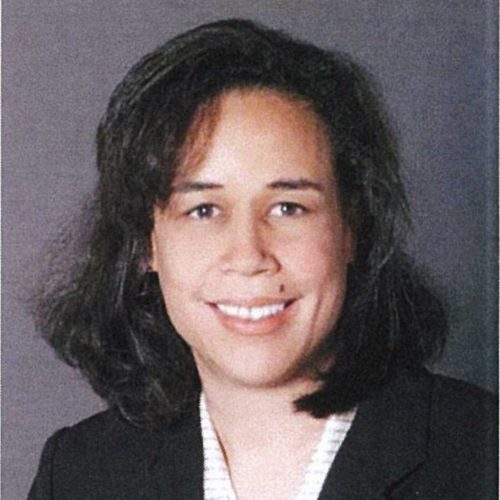In December last year the Securities and Exchange Commission made four proposals to change US market structure. The proposals that were put for comment included updating Rule 605 which covers data disclosure enhancements for all market participants; changing tick sizes and access fees; achieving best execution; and increasing competition for orders.
After the consultation period ended, industry trade body SIFMA held an equity market structure roundtable on 19 April to discuss responses to the SEC proposals.

Elad Roisman, partner at law firm Cravath, Swaine & Moore, said at the roundtable: “To say that these proposals have had a strong reactions is a bit of an understatement, given how many stern faces I see looking around. The record is littered with comments of how expansive people feel that these rules are and the impact they will have.”
Sapna Patel, head of Americas market structure & liquidity strategy at Morgan Stanley, said at the roundtable that theSEC proposals are close to 1,700 pages of rulemaking.
“If we put in place the type of change that’s contemplated by all four proposals, this would be the biggest overhaul to our U.S. equity markets that we’ve seen since Reg NMS was adopted in 2005,” Patel added. “That certainly warrants the question as to whether or not that type of overhaul is necessary for our U.S. equity markets.”
Gregg Berman, director of market analytics & regulatory structure at Citadel Securities, argued that the proposals are not only the biggest change since Reg NMS, but actually directly reverse a lot of the regulation. Hubert De Jesus, global head of electronic trading & market structure at BlackRock, highlighted the need for post-implementation analysis and gave the example of the tick size pilot which showed that the proposal did not have the intended effect.

De Jesus added: “We were able to roll it back, and having the analysis after the fact to assess whether that actually was working or not working was very valuable and impactful on that rulemaking process.”
Jeffrey O’Connor, head of market structure, Americas, at Liquidnet, said in a statement that concerns about the SEC proposals run the gamut from technology infrastructure to potentially anti-competitive ramifications which will harm best execution. However, John Ramsay, chief market policy officer at IEX Exchange, said in a blog that their analysis of comments to the SEC suggest broad support for updating the rules in various respects to take account of the profound changes in the equity markets since the adoption of Reg NMS.
1. Rule 605

Joseph Seidel, chief operating officer at SIFMA, said the trade organisation supported updating SEC Rule 605, which covers data disclosure enhancements for all market participants.
“We believe an expanded Rule 605 should be the foundation of any future rulemaking the Commission contemplates regarding equity market structure, and once implemented, the Commission will have the data it needs to fully assess market quality and consider whether additional rulemaking is needed and how any such rulemaking should be designed,” said Seidel.
Christopher Gwozdz, head of order flow management, Fidelity Capital Markets at Fidelity Institutional said the asset manager strongly supports increased transparency, and agreed that Rule 605 should be modernized and used as the basis for any future market structure reform.
“Market makers, retail brokers, will have greater ability to assess venues and whether they access them to provide an enhanced performance,” said Gwozdz. “More public disclosure will allow academics, industry practitioners, and individual investors to see comparative metrics on performance across these brokers.”
Participants at the roundtable asserted that if the four rule changes go ahead then sequencing will be critical, and Rule 605 should be implemented first to provide better information in the market.

Debbie Toennies, head of regulatory affairs at JPMorgan Chase, said: “If we’re going to do these other things, do them incrementally, and then pause and make sure we don’t have a negative impact on the markets before introducing more changes. If there is a problem we can deal with it in a more controlled manner as opposed to all of these interrelated rules coming together at once.”
2. Tick size and access fees
The SEC has proposed changing the existing uniform tick size of one cent to minimum variable pricing increments for quoting and trading NMS stocks ranging from one cent to one-tenth of a cent. In addition access fee caps will be reduced and a new odd-lot best bid/offer benchmark will be introduced.

Michael Blaugrund, chief operating officer at NYSE, also supported the Rule 605 reporting reforms being implemented first, followed by reducing quoting increments.
“We’d also recommend accelerating the round lot definition changes,” said Blaugrund. “With respect to the other two proposals, to withdraw them, and then circle back once we have adequate data to evaluate what further reforms may be necessary.”
Morgan Stanley’s Patel continued that market participants are generally supportive of the SEC looking at tick size and access fees, and there seems to be support for going to half a penny for tick-constrained names.
“If you’re going smaller in terms of the tick, the access fee should come down proportionally with that, seems to be something that we’ve seen kind of broader industry support for,” Patel added. “In terms of dynamic ticks, my firm particularly has been an advocate of seeing a dynamic tick approach for the last five years.”
However Patel warned that if tick sizes fell to a tenth or two tenths of a penny, this would raise some of the same issues with respect to sub-penny jumping, flickering quotes, that the SEC addressed as part of the Sub-Penny Rule in Reg NMS when the market moved from fractions to decimals.

Michael Masone, head of Americas equities market structure at Citigroup, said the bank was very much in the camp of half penny for tick-constrained names and moving to wider tick increments for less liquid names. Masone added that the majority of the market could stay where it is, but two additional buckets should be added for the most liquid and least liquid names.
IEX noted there is a general consensus in favor of reducing the tick size to one-half cent for some subset of securities and substantial support for a common trading increment of $0.001.
3. Best execution

The SEC has sought to provide a clear definition of best execution. C. Annette Kelton, senior counsel and co-head of equities legal at Goldman Sachs, said the bank does not support this particular SEC proposal as the existing framework from FINRA and MSRB has been developed over decades and is very solid.
Kelton said: “The starting point probably should be to examine, and if needed, enhance the existing framework that we have rather than attempting to have us comply with a new overlapping rule, which is just going to bring additional complexity into the way that we operate our businesses and provide services to our clients.”
Other participants agreed that a robust best execution standard already exists and works well. In addition, Kelton said there are concerns that broker dealer judgment and discretion will be undermined by this proposal, in particular for very large orders outside the NBBO when brokers have to make many decisions such as routing and liquidity solutions that might be available.
Mehmet Kinak, global head of systematic trading & market structure at T. Rowe Price, added that the best execution proposal may seem to only affect broker dealers, but in reality will also impact the buy side.
“I need to access the market via a broker, so when they are hamstrung or required to do something, that requires us to follow that same procedure,” Kinak said. “It is an institutional rule that’s very myopic in price, and we’d like it to be more of a principles-based approach that does not create additional burdens.”
Concerns were also expressed that the best execution rule applies to other asset classes, including fixed income, and firms supported an institutional exemption for fixed income securities. In addition, it was felt that the cost of meeting the requirements would be prohibitive for small firms.
4. Order competition
The SEC has proposed a major change in the current payment for order flow structure by forcing retail orders onto exchanges for auction execution before they are “internalized” by wholesaler firms. Liquidnet’s O’Connor noted that Gensler’s primary objective is to move volumes back to exchanges and reduce a perceived anti-competitive wholesale market maker arena. He believes this proposal is the least likely to be implemented and there will be protracted legal wrangling if it is put in place.

“The retail trader currently enjoys zero commission trading, obtainable markets, unlimited size in 10,000+ listed stocks and ETFs, at prices that are at or better than institutions receive – bringing complexity and regulation to that backdrop is getting the expected response,” O’Connor wrote. “The most shocking of those comments coming from the exchange participants, who seemingly would benefit in a concerted effort to move volumes back to exchange from off.”
IEX said it is worth noting that the SEC’s proposals did not include a ban or other restriction on PFOF, but it is not surprising this was the most controversial of the SEC’s four proposals.
Andrew Upward, ETF strategist at Jane Street, said at the roundtable that the firm started wholesaling trading in 2019 and is living proof that the market allows new trading firms to come in and compete for orders.
Upward continued that issues with the proposed rule including the SEC comparing a retail marketable order that would be sent to an auction to the marketable orders that take liquidity on exchanges today. He said: “The SEC is suggesting that those are apples and apples, and we basically think those are apples and oranges.”
Jump Street would provide liquidity in auctions if the Order Competition Rule were passed as it is currently written.
“Absolutely we would, but we wouldn’t compete in those auctions as a wholesaler, we would compete as a liquidity provider,” added Upward. “As a liquidity provider in an auction, we think we would have a high degree of optionality in terms of which orders we actually want to compete for.”
Matt Billings, senior vice president, trading services at Two Sigma Securities, said the proposal would cause significant harm to the retail investors that the regulator is trying to protect.
Participants also said the SEC assumes that institutional investors and asset managers would participate in qualified auctions and provide a valuable source of liquidity to retail orders. However, Ashley Banfield, co-head, US sector trading at Fidelity Investments, argued that fund managers cannot be market makers who provide liquidity across a range of securities at all times in the day, but instead look to achieve the best outcome for parent level orders.

“It’s not to say we wouldn’t access this type of mechanism, and really that would happen through a broker algo with tools that are automated, but we would be measuring how utilizing that mechanism impacts parent level costs,” added Banfield.
Adam Inzirillo, head of North American equities at Cboe Global Markets, said exchanges could potentially play a complementary role by augmenting the current retail liquidity programs to provide price and size.
O’Connor wrote: “The ball is now in the SEC’s court, as the comment period has been robust in a relatively condensed time window. The dissent ranges in conviction to the varying proposals, but it is clear and from a wide swath of industry participants.”



